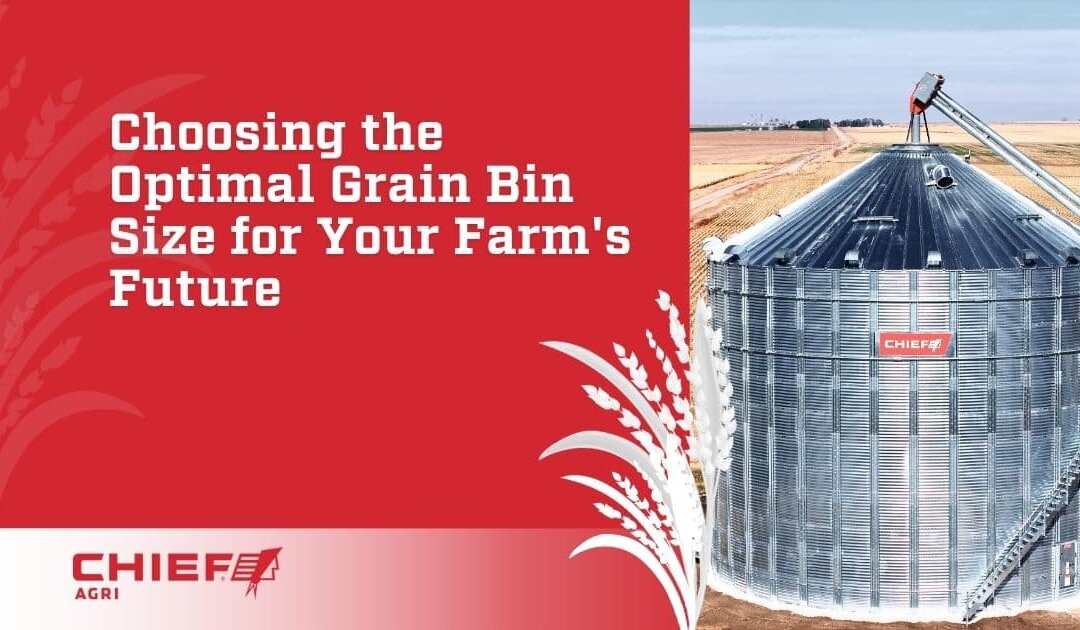Why the Right Grain Bin Size is a Critical Agricultural Investment for Your Farm
Investing in on-farm grain storage is a significant decision that impacts your farm’s efficiency, profitability, and future growth. Choosing the right grain bin size isn’t simply about capacity; it’s a critical part of long-term agricultural planning. By carefully considering your current needs and future goals, you can select a solution that maximizes your returns and provides marketing flexibility.
A leader in grain storage solutions, Chief Agri understands the complexities of this decision. We began as a grain bin company over six decades ago, and since then, we’ve established a reputation as an expert in comprehensive on-farm grain storage solutions. We’ll explain the key factors to consider as you choose the right grain bin size that protects your investment and maximizes your farm’s profitability for years to come.

Calculating Your Current and Future Grain Storage Needs
Determining the right grain bin size starts with a clear understanding of your operation. You need to look at both your current production and your long-term growth trajectory.
Understanding Your Current Yield
The first step is to accurately assess your total current annual grain production, including all crops from all your fields. You can calculate this by reviewing past harvest records, yield monitor data, and crop insurance reports. This data will provide a solid baseline for determining your current storage requirements.
RELATED: Grain Bin Capacity: How Many Bushels Does a Grain Bin Hold?
Factoring in Future Growth and Agricultural Planning
Smart agricultural planning means looking beyond this year’s harvest and considering how your farm might grow over the next decade or two. Will you expand your acreage or adopt new genetics that promise higher yields? A good rule of thumb is to add an extra 20% capacity to your storage needs to account for potential increases and prevent you from having to build additional farm grain bins sooner than expected.
To quickly estimate your needs, use this simple formula:
- Total acres x average yield per acre= total bushels.
- Then, add 20% for future growth.
This will give you a good starting point for determining the ideal grain bin sizes for your operation.
Considering Crop Diversity and Segregation
If you grow multiple crops—or even different varieties of the same crop—you’ll need separate grain storage solutions to maintain quality and avoid commingling. Segregating crops is essential for meeting specific buyer specifications and commanding premium prices. A diversified operation often benefits more from multiple, smaller farm grain bins rather than one large one.
RELATED: Grain 101: Grain Types and Optimal Storage From Chief Agri
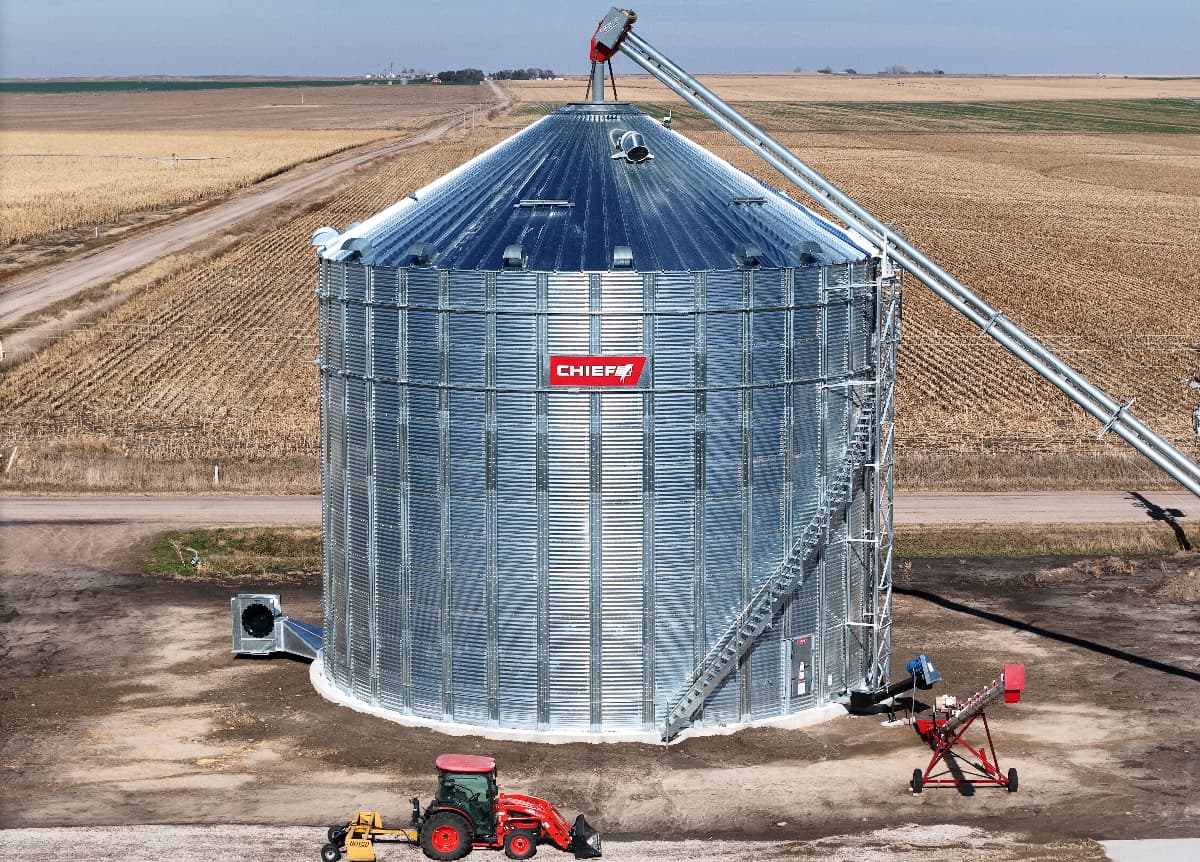
Evaluating the Types of Grain Storage Solutions: Flat-Bottom Bins vs. Hopper Bins
When it comes to farm equipment, not all storage bins are created equal. The two primary types of bins offer different advantages depending on your operational needs.
Flat-Bottom Bins
Flat-bottom bins are the workhorse of on-farm storage. They are designed for large-volume, long-term storage and provide the lowest cost per bushel.
- Pros:
- Lower initial cost per bushel.
- Designed for maximum capacity.
- Ideal for long-term storage of staple crops like corn or soybeans.
- Cons:
- Requires a sweep auger to fully unload.
- More labor-intensive to clean out between crops.
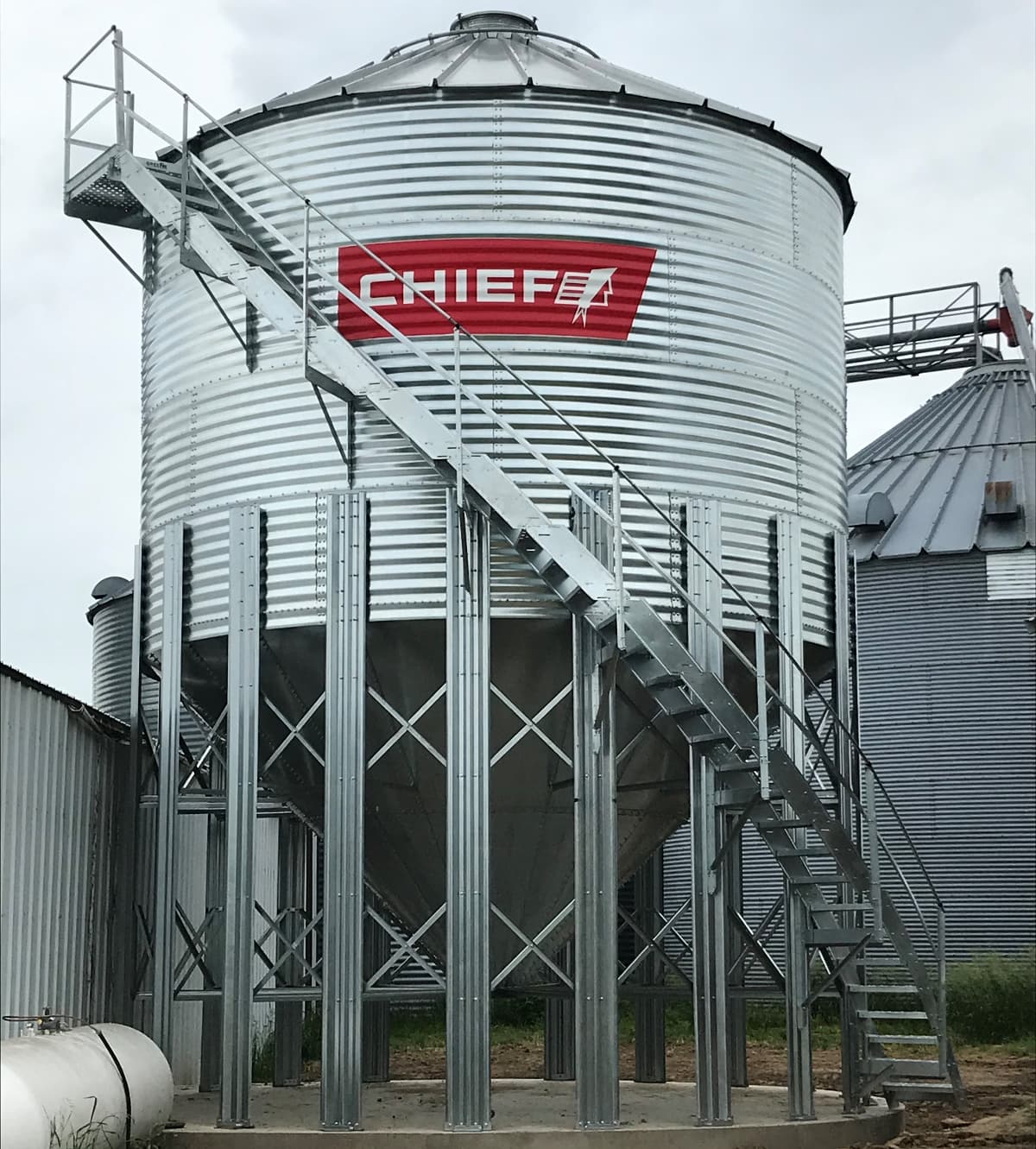
Hopper Bins
Hopper bins, with their cone-shaped bottom, are designed for efficiency and convenience. They are a great choice for smaller volumes and crops that are frequently moved in and out of storage.
- Pros:
- Gravity-fed unloading is fast and easy.
- No need for a sweep auger, reducing labor and equipment costs.
- Ideal for wet holding, seed, or fertilizer.
- Cons:
- Higher initial cost per bushel.
- Smaller capacities compared to flat-bottom bins.
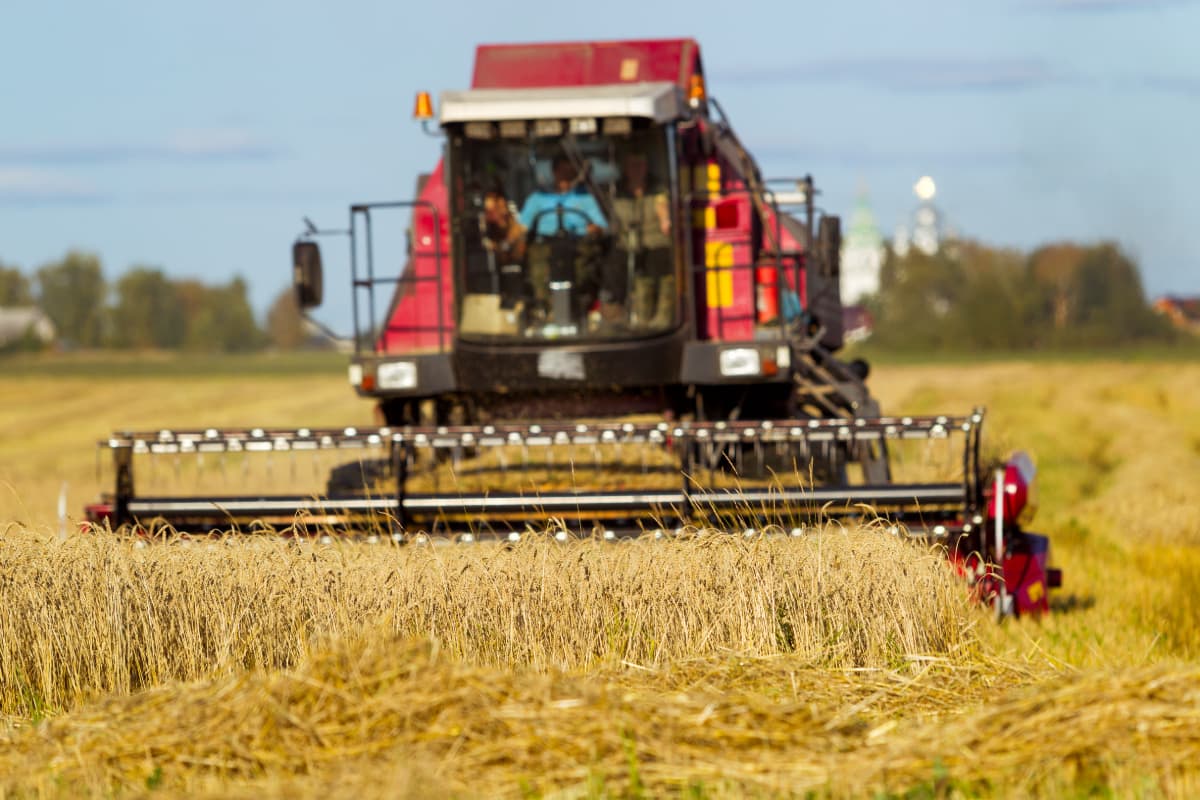
Key Factors Beyond Size: Making a Smart Agricultural Investment
Choosing the right grain bin size is only part of the equation. To make a smart agricultural investment, you need to consider other factors that impact the long-term value and functionality of your storage system.
Cost Per Bushel
The cost per bushel is a key metric for evaluating your investment. While a single large bin has a higher upfront cost, it often provides a lower cost per bushel than several smaller bins. It’s important to weigh these economies of scale against the operational flexibility that multiple bins can provide.
A detailed cost per bushel analysis can help you determine the most cost-effective grain storage solutions for your operation. Many universities, like Cornell and Mississippi State, and agricultural organizations offer online calculators and spreadsheets that allow you to input bin size, total cost, and other financial variables to determine a cost per bushel per year, helping you compare different grain bin sizes and types.
Location and Yard Layout
The location of your new farm equipment is crucial. A well-planned site will improve efficiency and allow for future expansion. Consider the following:
- Traffic Flow: Ensure easy access for trucks and combines during harvest.
- Expansion: Leave enough space to add more bins, a dryer, or other farm equipment later on.
- Proximity: Place bins close to your drying systems and loading areas to minimize travel time and fuel consumption.
Aeration and Monitoring Systems
Proper aeration is essential for preserving grain quality and preventing spoilage, regardless of your grain bin size. Modern aeration systems, paired with monitoring technology, allow you to remotely check grain temperature and moisture levels, protecting your valuable agricultural investment. This technology minimizes waste and ensures your grain remains in top condition until it’s time to sell.
Long-Term Durability and Construction
A grain bin is a long-term agricultural investment, so quality and durability are paramount. Look for bins made from heavy-gauge steel with durable coatings. Chief Agri’s products are known for their heavy-duty construction and exacting engineering standards, which ensure long-term reliability, high return on investment, and peace of mind.

Common Questions Farmers Have About Grain Bin Sizes
What are the standard grain bin sizes available?
While manufacturers offer a wide range of custom options, here are some common diameters and approximate capacities to give you an idea of the scale:
- 18′ Diameter: Approximately 3,000 to 11,000 bushels
- 36′ Diameter: Approximately 20,000 to 45,000 bushels
- 60′ Diameter: Approximately 100,000 to 200,000 bushels
- 105′ Diameter: Approximately 500,000 to 1,000,000 bushels
Chief Agri’s farm bin sizes meet the needs of farms, from small to large. Browse our selection to find the bin you need.
Is it better to buy one large bin or multiple smaller bins?
The choice between one large bin and multiple smaller bins depends on your agricultural planning and operational style. A single large bin offers the best cost per bushel and is ideal for a high-volume, single-crop operation. In contrast, multiple smaller bins provide greater flexibility, allowing you to segregate different crops and grades, which can be a significant advantage when marketing your grain.
How does the choice of grain bin size affect my farm’s operational efficiency?
Choosing the right grain bin size is essential for boosting your farm’s operational efficiency. Bins that are too small can create harvest bottlenecks, forcing costly delays. Conversely, bins that are too large can overwhelm your drying system, potentially compromising grain quality. A well-planned storage system ensures a smooth and continuous flow from the field to storage.
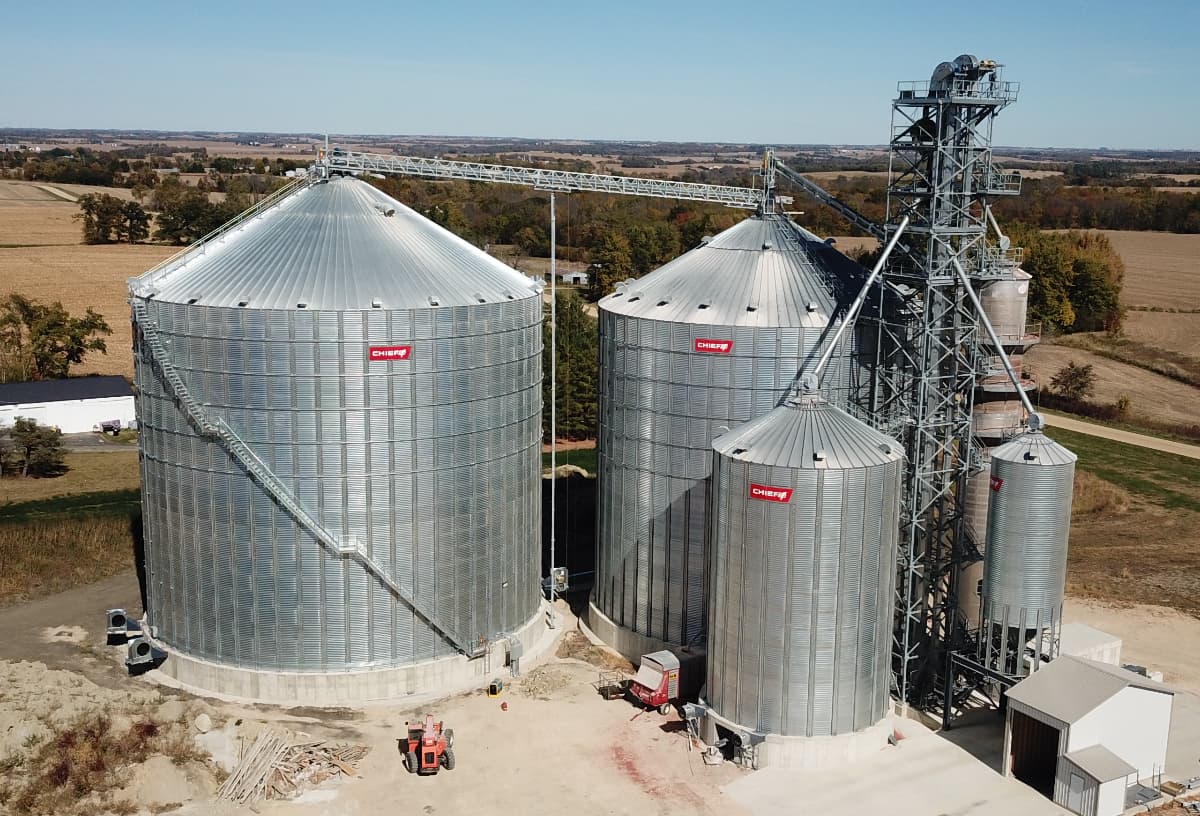
Securing Your Farm’s Future with the Right Grain Bin Size
Choosing the right grain bin size is a strategic decision that impacts your farm’s profitability for decades to come. It’s an integral part of effective agricultural planning that gives you control over your harvest, marketing, and future growth. By carefully considering your current and future needs, evaluating different types of storage, and focusing on quality and durability, you can make a wise agricultural investment that pays dividends.
At Chief Agri, our legacy is built on helping farmers succeed. We provide reliable, heavy-duty grain storage bins engineered for the long haul. With a reputation for trustworthiness and a commitment to customer service, we’re a partner you can count on.
Don’t leave this critical decision to chance. Contact the experts at Chief Agri to discuss our full range of grain bin sizes. Let us help you find the perfect grain storage solutions to secure your farm’s future.

